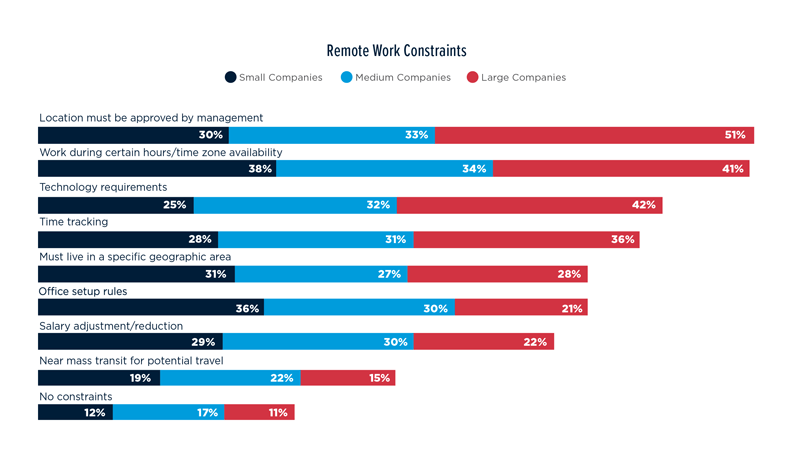EMPLOYEE MOBILITY AND CHANGING WORKPLACES
Corporate Relocations
Corporate relocations are, in part, being fueled by a rising sentiment amongst company leadership to see employees back in the office. On the other hand, voluntary relocations are being driven by employees wanting to fully embrace the freedom and flexibility they have found in remote or hybrid structures.
- Types of relocations: 48% interstate, 27% intrastate, 18% between U.S. and another country, 11% between two international countries.
- In 2022, 67% of relocations were declined, which was an increase from 2021 for 38% of respondents.
With companies returning employees to the office, there is once again a demand for employees who live in the area or who are willing to relocate. Evidence of this can be seen in the number of relocations and budgets in 2022, with 68% of respondents seeing an increase in relocations and 64% seeing an increase in their budget. Looking toward 2023, 60% of companies are expecting an increase in relocations and 59% are allocating larger relocation budgets. Relocations are impacted by internal and external factors, such as company growth, safety concerns regarding global conflicts, ability to work remotely, and supply chain restrictions.
- Top Internal Factors: knowledge/skill transfer (29%), growth of company (28%), expansion of telecommuting/remote work (27%), and employee inability/ineligibility to relocate (27%).
- Top External Factors: economic conditions (34%), lack of qualified people locally (27%), political/regulatory environment (26%), real estate market (25%), supply chain/shipping constraints (25%).
Voluntary Relocations
In addition to employees being asked to relocate for work, employees are also choosing to move for personal reasons. Fully remote workers have the freedom to choose where they want to live for reasons other than where they work. For many, they are seeking a lower cost of living, access to hobbies/lifestyle, and/or to be closer to family. For hybrid employees who are only required to be in office during certain times, there is the opportunity to blend extended travel with work—commonly referred to as a workcation.
- In 2023, 39% of companies expect an increase in permanent voluntary relocations, 46% are expecting the same, and 11% are expecting to see a decrease.
- For temporary voluntary relocations, 31% expect an increase, 46% are expecting the same, and 15% are expecting less than 2022.
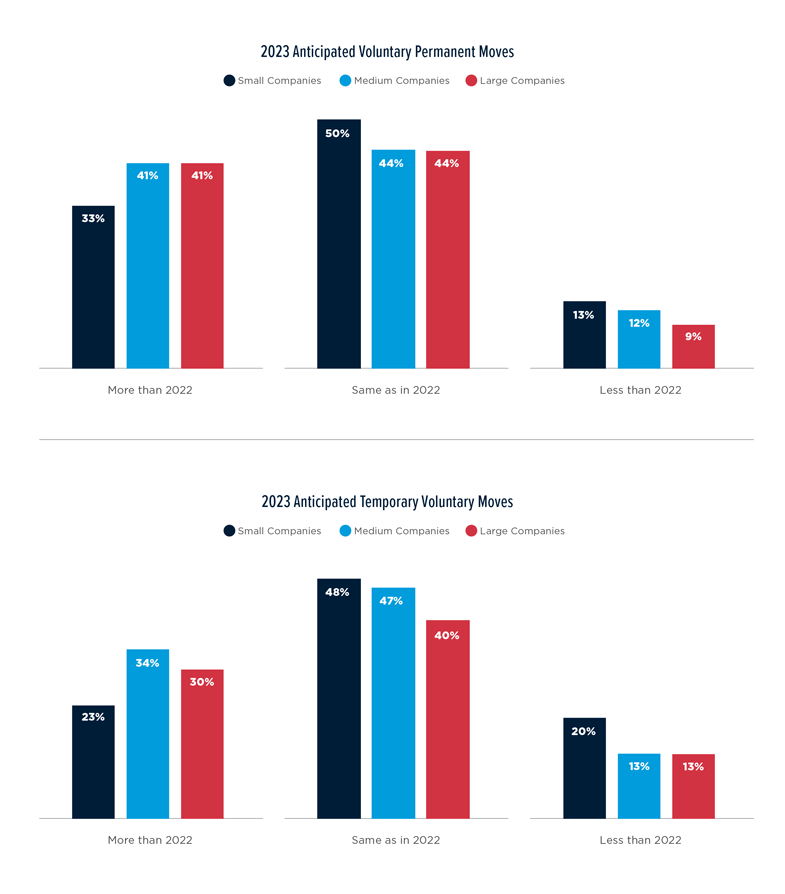
Changing Workplaces
When looking at workplace management policies for 2023, over half (55%) of companies are planning to use the hybrid model, up from 44% in 2022. For others, 48% plan to be full time in the office, 42% plan to allow certain departments to remain remote, 32% are going to let their employees decide if they want to work from home or the office, and only 9% plan to have a fully remote workforce.
- Respondents from small companies were less likely to go with a hybrid model than medium and large companies.
- Hybrid work is expected to grow to 81% by 2024 while remote work is expected to drop to 19% (Pereira).
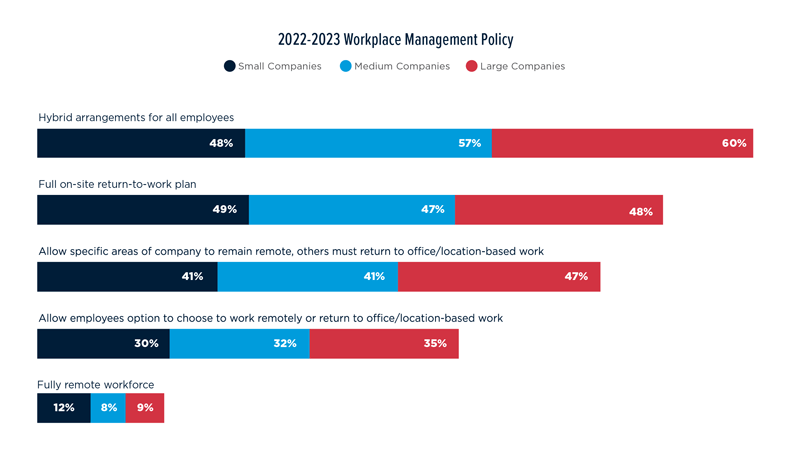
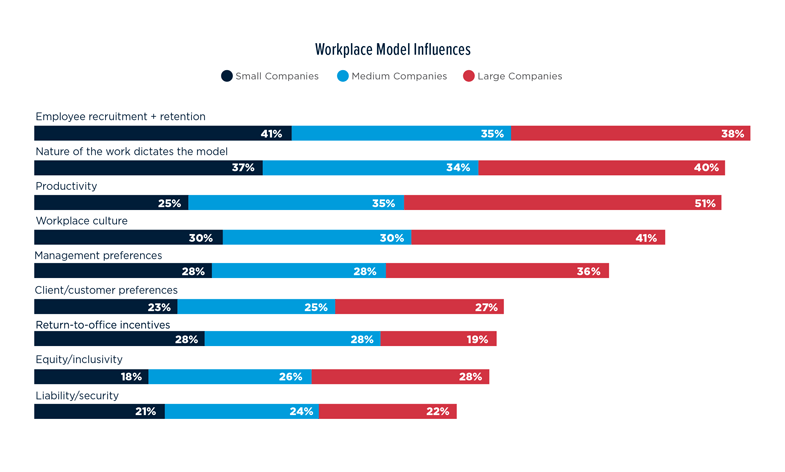
Office Space
Offices around the country saw their occupancy double in 2022, but overall attendance remains less than pre-pandemic levels (Sahadi). A common goal amongst CEOs is to get employees back in the office, even if just for a few days a week (Sahadi).
To keep pace with rising office attendance, a little under half (47%) of surveyed companies increased their office space during 2022, 43% saw no change, and only 10% reported a decrease in office space. Companies are not only adding more workspace, but enacting changes to make the office a more enjoyable workplace. Some are even considering moving to a new area with more than 1 in 4 medium companies exploring relocating to a new city.
- In 2022, changes to offices spaces included:
- 27% adding communal work areas.
- 26% offering incentives such as free meals.
- 25% renovating the space.
- 24% accepting incentives from local government for office return.
- 23% exploring moving the office to a new area.
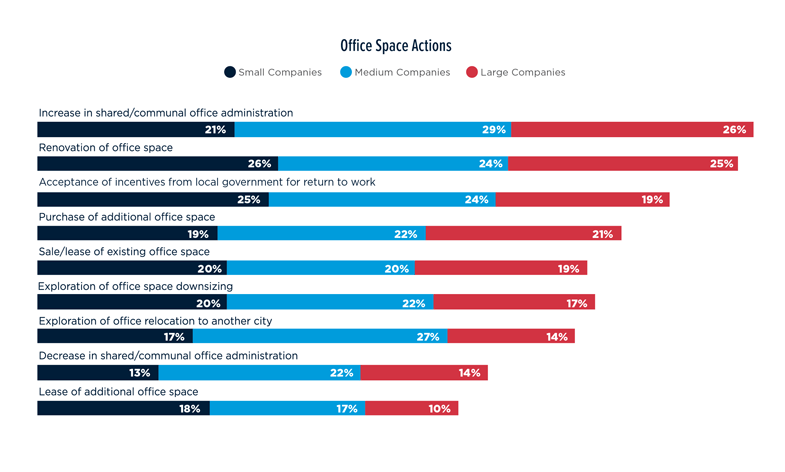
Hybrid Workplaces
Across the board, employees largely favor hybrid workplace policies and many workplaces have adapted to hybrid models through the course of the pandemic. To manage their employees outside the office, 84% of companies surveyed have implemented rules and regulations that remote employees must abide by.
- Only 6% of surveyed companies are planning to not have any remote staff for 2023.
- Top 3 remote work constraints:
- 36% availability at certain hours regardless of time zone
- 34% work locations must be approved by management
- 32% technology requirements (e.g., internet speed and security)
